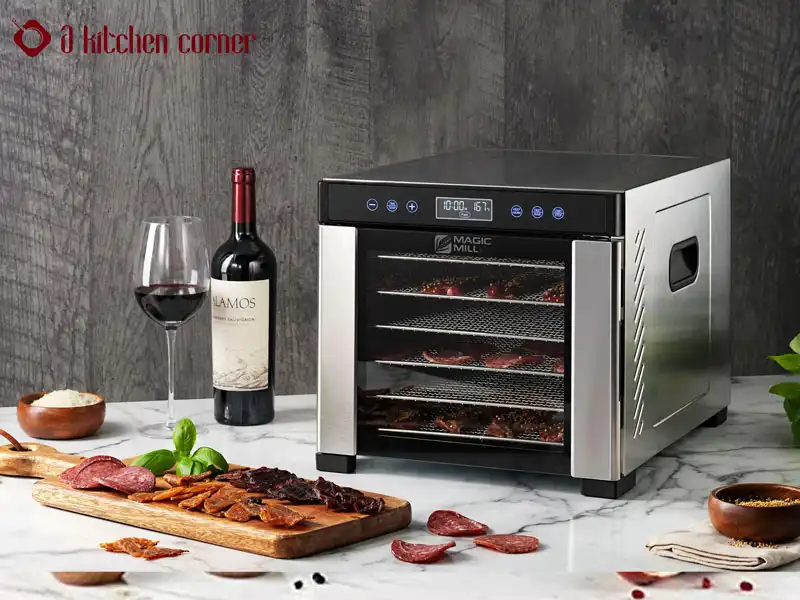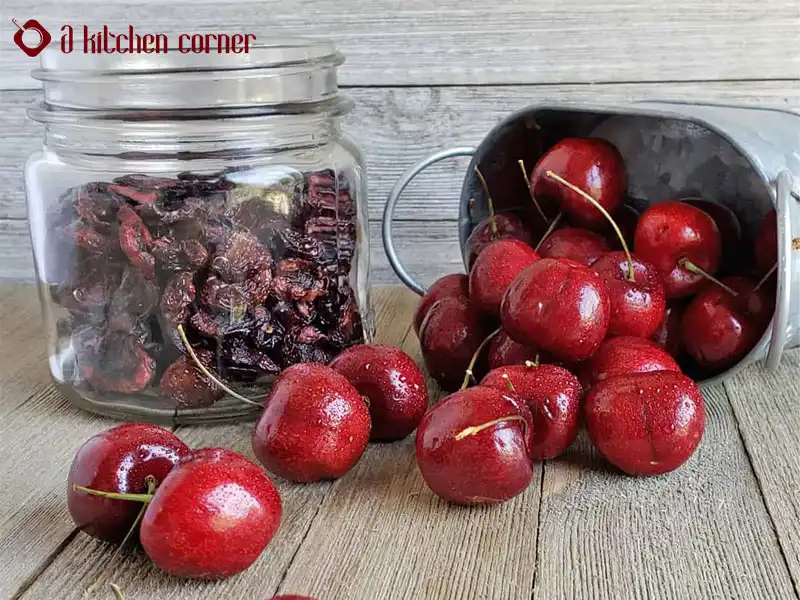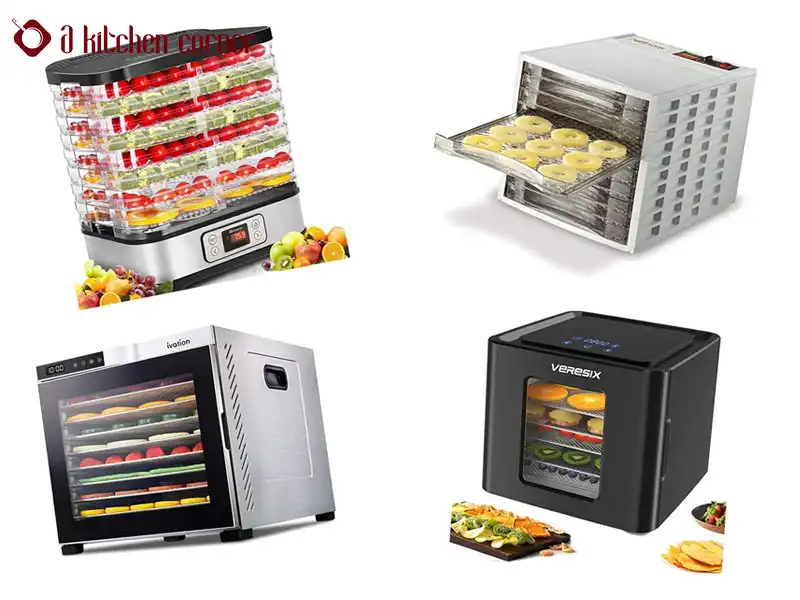
How does a dehydrator work? We have eaten dehydrated foods, including fruits, cereals, chips, and jerky. But it’s likely that none of us fully comprehend how the mango slice in our hands went from being soft, juicy, and messy to being chewy and clasped in our hands without needing a napkin. A brief Google search will reveal that the dehydrator is the secret weapon, but how does one operate?
We were also fascinated when we first saw or heard about a dehydrator. To find numerous answers and give you explanations, we dug deep into this transforming machine and conducted an extensive study.
Contents
What is a dehydrator?
A food dehydrator is a device that removes moisture from food to aid in its preservation. A food dehydrator uses a heat source and air flow to reduce the water content of foods.
The water content of food is usually very high, typically 80% to 95% for various fruits and vegetables and 50% to 75% for various types of meat. Removing moisture from food restrains various bacteria from growing and spoiling food.
Further, removing moisture from food reduces the weight of the food. Thus, food dehydrators are used to preserve and extend the shelf life of various foods.
In addition, removing water causes the flavors of the food to become more concentrated. Many culinary techniques make use of food dehydrators.
How does a dehydrator work?
How does a dehydrator operate, then? An electrical device known as a dehydrator eliminates moisture from whatever is inside. Trays, heating elements, vents, and a fan for circulation are all parts of it.
The heating element of the dehydrator boosts the temperature inside the appliance, the fan distributes the heat and draws moisture out, and the trays contain the food you want to dehydrate.
The practical use of a dehydrator involves a lot of specifics, of course. You can’t just chop your food, put it in the dishwasher, shut the door, and tell it to “work!”.
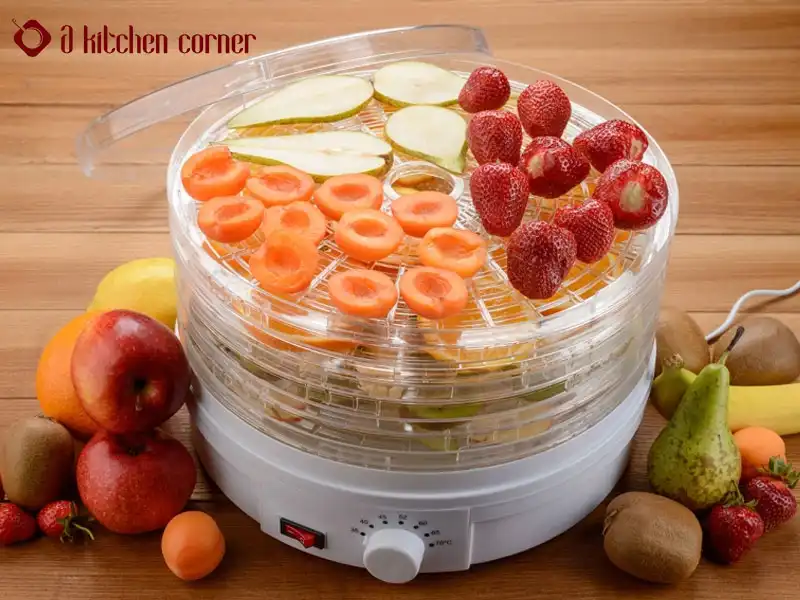
A food dehydrator is a device that removes moisture from food to aid in its preservation.
You must study which temperatures are best for each type of food because dehydrators have a temperature scale to utilize. There are schedules for how to get your particular food perfectly dehydrated.
Additionally, there are a lot of dehydration devices on the market, so while searching, you need to know what to look for and what you want to avoid. Fortunately, our curiosity has brought us to some wonderful discoveries, which we are delighted to share in the hope that they will point you in the right way.
Heating
Moisture is drawn out of the food inside the dehydrator by its heat. The machine especially accomplishes this using low cooking temperatures and lengthy cooking durations.
Since it keeps the food’s flavors and nutrients intact, this method of moisture removal is the best. Cooking at high temperatures frequently destroys food’s nutritional content and potential tastes.
Therefore, one of the primary reasons we use a dehydrator is to enjoy exquisite sweets made possible by technology. However, it does a great job of keeping the food we put within is another important factor.
Bacteria, yeasts, and molds are prevented from forming on the food by the heat’s capacity to evaporate moisture from the contents of the dehydrator. The moisture in the food is necessary for the survival of everything that causes our food to spoil.
When you wonder, “How does a dehydrator work?” Although the heating element is important, it is not the sole factor. Think about steaming vegetables to understand how the moist air that remains in the machine after the heat eliminates the moisture from the food causes the material to absorb it again. Air circulation, therefore, plays a crucial role in dehydrators.
Air Circulation
The moist air the heating components draw from the food inside the dehydrator will be taken by air circulation and sent outside the machine by the dehydrator’s vents. In doing so, the food is prevented from reabsorbing the moisture it sheds.
But to ensure that the contents are dehydrated as thoroughly as possible, the dehydrator pulls dry air from outside the machine into the machine and eliminates damp air through the vents.
The fans that provide air circulation ensure that the heat inside the dehydrator is evenly delivered to each item inside, in addition to keeping a space of dry air inside the machine.
A high-quality machine won’t dry certain items quickly while leaving some inside damp. A top-notch machine will produce a batch of equally delicious and dehydrated goodies.
A dehydrator uses one of two types of air circulation. Understanding the two alternatives for great air circulation and subsequent dehydration is necessary to comprehend “How does a dehydrator work?”.

How does a dehydrator work?
Horizontal Air Movement
The benefit of horizontal air circulation is that it eliminates the need to rotate and stir the inside trays. A dehydrator with horizontal air movement has a fan in the back that directs airflow toward the door that needs to be opened. All the objects on each tray are dried equally by the air as it passes over them all.
Vertical Air Movement
The fan on these dehydrators can be located at the top or the bottom of the device in one of two ways. Food on the bottom will often become significantly drier than food on the top when using a top-side fan because heat rises. The heat we rely on to draw the moisture out will have a tougher time reaching the food on top.
Food may, however, drip and trickle down while the fan is at the bottom, making cleaning difficult. Your food will dry much more uniformly if your machine has a fan at the bottom, but you should make sure the trays are drip-proof.
Types of dehydrators
When looking for the best food dehydrator, you’ll discover that most models fall into one of two groups: vertical flow or horizontal flow.
As the names imply, the orientation of the dehydrators and whether the food is piled vertically or lined up side by side allow you to readily distinguish between the two types of dehydrators. However, the two types of models operate differently in addition to the difference in orientation.
Vertical Flow Food Dehydrators
Most vertical flow food dehydrators, also known as stacking unit dehydrators, feature a heat source at the top of the base of the food processor.
The most economical solutions are often vertical flow food dehydrators. However, this is partly because they don’t distribute heat as evenly. However, a fan is typically included in vertical flow models to assist with this.
They function adequately for the majority of fruits and vegetables. Still, you’ll have difficulty getting high-quality beef jerky from them unless you exert some human labor in manually moving the trays during the dehydration process.
Benefits:
- More affordable.
- Vertical flow dehydrators have a compact size. These are often small and simple to store, taking up little counter space.
- Frequently, they can be expanded. You can often add more shelves to these dehydrators over time by purchasing more of the shelves.
Remember that:
- Don’t heat as evenly as horizontal models. For best results, you should change out the trays.
- Work more effectively with fruits and vegetables than with meats.
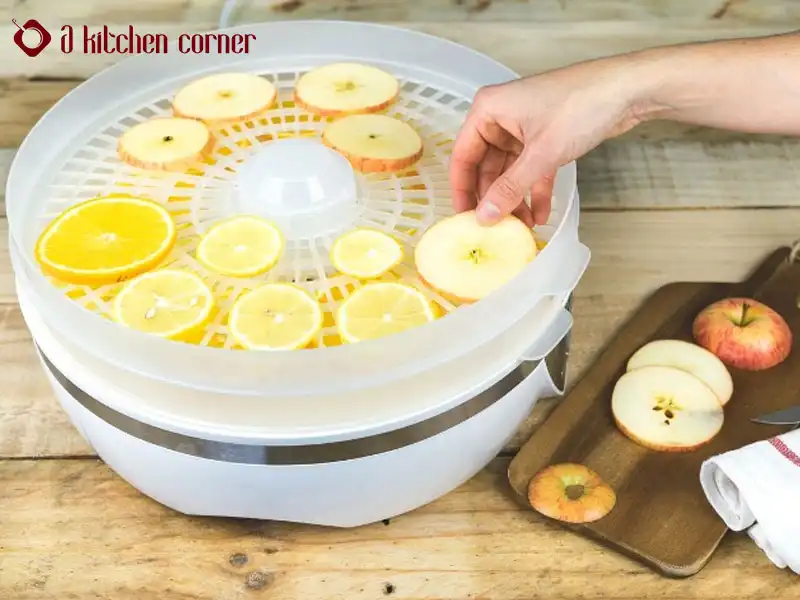
Vertical Flow Food Dehydrator
Horizontal Flow Food Dehydrators
With the heating source at the back, horizontal flow food dehydrators—also known as shelf tray food dehydrators—operate more like ordinary ovens.
Although they cost more than vertical models, they are renowned for dehydrating more uniformly across the gadget. They are, therefore, the best option for dehydrating meat and preparing beef jerky.
This kind of dehydrator is by far the simplest to operate. You can get them going and leave them alone until your dinner is ready without doing anything more.
Benefits:
- Effective and uniform dehydration throughout.
- It can be applied to meats and more difficult vegetables.
- Simple to use. Once you have it going, there is no more physical labor necessary.
- You can test out more challenging recipes.
Remember that
- Usually more pricey.
- Their size is bigger. Will need additional room on a counter or in a cupboard to use and store.
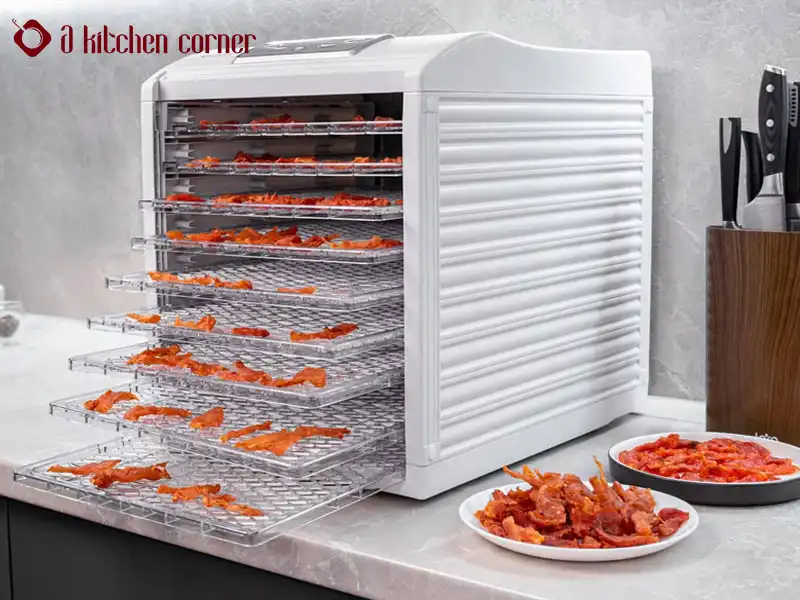
Horizontal Flow Food Dehydrator
Why Should You Own a Food Dehydrator?
Now you may know how a dehydrator works, so, is a food dehydrator worth it? The answer is definitely yes! Food dehydrators are reasonably inexpensive investments providing numerous benefits to you and your family.
Here are some advantages you should anticipate when purchasing a food dehydrator, from producing healthier foods to saving money.
- Help you save money on snacks.
- Prevent food waste because you may make dehydrated snacks from any fresh produce from your garden or most recent grocery run.
- No matter what time of year, dehydrators enable snacking on out-of-season fruits and vegetables.
- Make eating snacks a healthy habit. You can munch on more wholesome, nutrient-dense meals as an alternative to chocolate high in sugar or salty potato chips. While also offering nutritional advantages, dehydrated fruit may help satisfy your sweet appetite.
Most nutrients are retained in dried meals, so you receive the same vitamins and minerals as you would if you consumed fresh food. Having a supply of dehydrated foods on hand will put you ahead of everyone else on the block in terms of surviving the zombie apocalypse (or any natural disaster), even though it’s not an immediate issue.
Popular Food Dehydrators Brands
In addition to all the other choices, you must make, the brand’s reputation must be considered. You’re sure to run into a few major brands in your search because so many different food dehydrators are available on the market.
To indicate what their consumers thought of their products, we looked at the customer reviews for a few of the most well-known businesses.

Excalibur food dehydrator
Excalibur offers top-of-the-line horizontal flow dehydrators, which are well-known in the business. The initial price and size may be intimidating for people not accustomed to this style of food preparation. Still, an Excalibur dehydrator can be a wise purchase for those who are committed to dehydrating food.
Customer evaluations are mostly effusive, save from the sporadic gripe about the noise they create. Excalibur is unquestionably a company you should research if you’re serious about purchasing a food dehydrator.
Nesco
One of the most well-known manufacturers of food dehydrators is Nesco, which is well-known for its Snackmaster and Gardenmaster models.
They provide a variety of vertical flow models. Their selection of dehydrators is among the most reasonably priced you’ll discover, and customers generally give them positive feedback.
Nesco does provide a variety of well-liked models, so before choosing one, make sure to compare the qualities of each model. No matter the model you purchase, Nesco is a fantastic company with a strong name in the dehydrating industry.
Presto
Presto offers many sizes of straightforward, reasonably priced vertical flow dehydrators (all of which can be expanded by purchasing more shelves). Although it lacks bells and whistles like a timer or thermostat and has a simple look, many reviewers seem pleased with its functionality.
Final thoughts
We hope that by this point, we have adequately addressed your curious question, “How does a dehydrator work?” You ought to have the knowledge and understanding necessary to get started. So, without being overly intimidated by how this equipment operates, have fun using its power to create all the delicious delicacies your heart wishes! And be sure to share your experiences with us!
And don’t forget to check more articles on our websites!
You may be interested:

